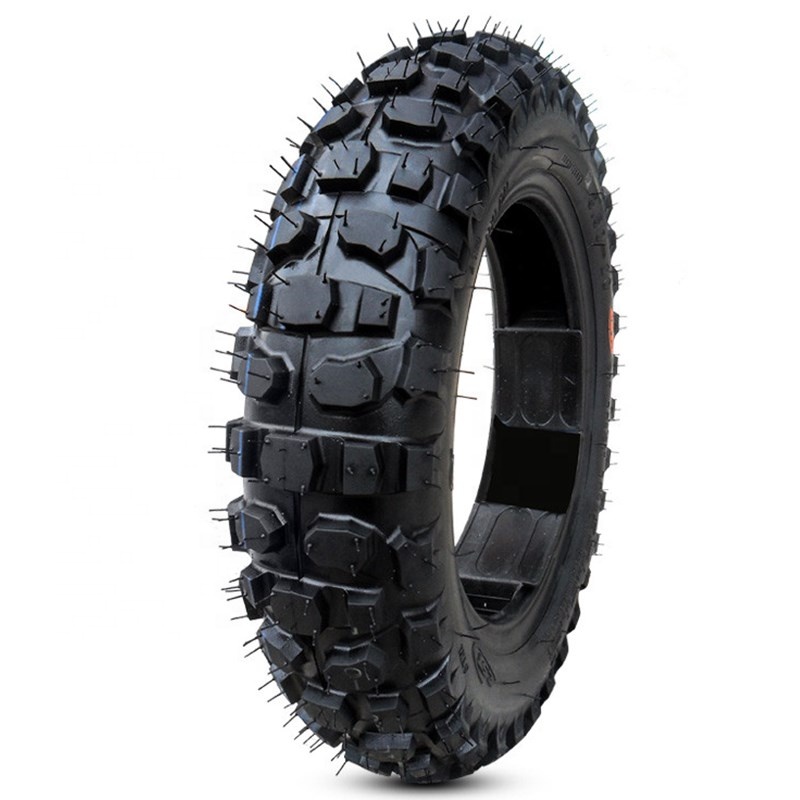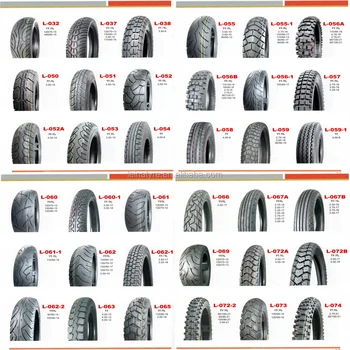All About the Crucial Motorcycle Tire Guide for Ideal Bike Maintenance and Performance
The Necessary Motorbike Tire Guide serves as a vital source for cyclists looking for to improve their bike's efficiency and security. motorcycle tyre guide. It gives understandings right into different tyre types and specs that affect managing and longevity. Furthermore, understanding proper upkeep methods can considerably extend tyre life. Nonetheless, numerous cyclists neglect critical elements that affect their riding experience. Checking out these facets can result in educated choices that inevitably improve both safety and security and pleasure on the road
Understanding Motorbike Tyre Types
When choosing bike tyres, recognizing the various types available is important for peak efficiency and safety. Motorcyclists come across different tyre classifications, each developed for specific riding styles and conditions. Sporting activity tires stress grip and responsiveness, making them appropriate for high-performance bikes and track use. Visiting tires, on the various other hand, concentrate on toughness and comfort, perfect for long-distance adventures. Off-road tyres include aggressive walk patterns, providing grip on unequal surface areas, while dual-sport tires use adaptability for cyclists that change in between on-road and off-road conditions.Additionally, cruiser tires are designed for security and a smooth experience, dealing with the unique needs of cruisers and exploring bikes. Understanding these groups allows bikers to choose tyres that straighten with their riding practices and environmental problems, inevitably enhancing both security and performance. Each type plays an important role in guaranteeing a superior riding experience customized to the individual motorcyclist's needs.
Secret Tire Specs Clarified
Choosing the appropriate motorcycle tires entails greater than just recognizing the numerous kinds; it likewise needs familiarity with key requirements that influence efficiency and security. Key specs consist of tire dimension, which is commonly revealed as a series of numbers showing width, aspect ratio, and rim diameter. This code is essential for guaranteeing compatibility with the motorcycle.Another important spec is the lots index, showing the maximum weight a tyre can support. The speed score signifies the maximum rate a tyre can safely deal with, essential for performance enthusiasts.Additionally, step pattern and rubber compound impact grip, stability, and wear qualities. Tires with a softer compound have a tendency to offer better hold however wear faster, while tougher compounds last much longer but might compromise grip. Understanding these requirements allows motorcyclists to make enlightened choices, improving both their safety and riding experience.
Just how to Choose the Right Tyres for Your Bike
Exactly how can a cyclist guarantee they select the ideal tyres for their motorbike? Choosing the suitable tyres involves understanding the specific demands based upon riding weather condition, terrain, and design conditions. Motorcyclists need to initially consult the motorcycle's guidebook to recognize advised tyre dimensions and specifications.Next, they need to assess the kind of riding they plan to do-- whether it's commuting, touring, or off-road. Each group has distinct tyre designs tailored for optimal performance.Additionally, cyclists need to analyze step patterns; much deeper footsteps offer better grip in wet conditions, while shallower footsteps enhance security on completely dry surfaces.Lastly, it is important to take a look at the tyre's building and construction and material, as these factors affect durability and handling (motorcycle tyre guide). By assessing these elements meticulously, a rider can confidently pick tires that improve safety, performance, and overall riding experience
The Relevance of Tyre Stress and Maintenance
Tire pressure is a substantial facet of bike maintenance that straight impacts safety and security and performance. Keeping the correct tyre stress guarantees excellent contact with the roadway, improving grasp and stability during experiences. Under-inflated tyres can cause enhanced rolling resistance, causing poor gas performance and undue wear on the tires. Conversely, over-inflated tyres may trigger an extreme ride and lower traction, particularly in damp conditions.Regularly monitoring tyre stress, ideally before each ride, is necessary to maintaining the motorcycle's total efficiency. Cyclists must describe the producer's specs for the suggested pressure degrees. In addition, monitoring tyre problem and readjusting stress according to tons and riding problems is crucial for safety and security. Proper tire upkeep adds to extended tire life-span, better handling, and enhanced stopping efficiency. Ultimately, constant focus to tyre stress and maintenance is important for assuring a pleasurable and safe riding experience.

Identifying Indications of Tire Use and Damages
Acknowledging indicators of tire wear and damage is necessary for keeping motorcycle safety and performance. Secret indications consist of evaluating tread deepness and carrying out an extensive visual inspection for any kind of visible damage. Addressing these factors promptly can stop further difficulties on the road.
Walk Depth Analysis
As riders take to the roads, the value of examining walk depth can not be overemphasized, considering that worn or harmed tyres can greatly impact security and performance. Tread depth straight affects traction, braking range, and cornering stability. why not look here To examine walk deepness, bikers need to utilize a step deepness gauge, measuring the grooves at various factors throughout the tyre. A deepness of 2mm or less shows considerable wear and demands instant substitute. In addition, bikers can utilize the "penny examination" by placing a coin right into the tread; if the top of Lincoln's head is visible, the tire is as well used. Regular checks ensure peak grasp on varied roadway conditions, promoting a more secure riding experience while improving the general handling of the motorbike.
Aesthetic Damage Examination
Examining motorcycle tires for aesthetic damages is important for keeping security when driving. Motorcyclists should regularly analyze tyres for indications of wear such as cracks, protrudes, or punctures. Irregular wear patterns may indicate placement issues or inappropriate inflation, resulting in endangered efficiency. In addition, looking for foreign items embedded in the step can prevent prospective blowouts. Riders should pay close interest to the sidewalls, as any kind of cuts or abrasions can deteriorate the tyre's structure. Ensuring that the walk is without too much wear is essential for optimal hold. Routine visual assessments not only enhance security yet likewise prolong the life of the tyres, making sure a smoother and much more reputable riding experience. Prompt discovery of damage can prevent costly repair services and crashes.
Seasonal Tyre Considerations for Various Riding Conditions
When considering motorcycle tires, seasonal problems play a vital function in performance. In damp weather, tyres designed for improved grasp and water variation become essential for security. In addition, winter riding calls for specific tyre qualities to guarantee peak grip on chilly, possibly unwelcoming surface areas.

Wet Weather Efficiency
Wet climate condition present special challenges for motorcyclists, making the option of tyres crucial for safety and efficiency. Tires developed for damp climate usually feature deeper treads and specialized rubber substances that improve grasp on slippery surface areas. These tires straight from the source are crafted to carry water away, minimizing the risk of aquaplaning and boosting stability during rainfall. Motorcyclists should take into consideration tyres with a well balanced design, offering both traction and durability in damp problems. In addition, preserving correct tyre pressure is important, as under-inflated tires can jeopardize efficiency. When encountered with rain-soaked roads, regular examinations for wear and damages are necessary to guarantee peak function. Choosing suitable wet-weather tires inevitably adds to a safer and extra enjoyable riding experience.
Winter Season Tyre Needs
Riding in winter season conditions postures unique obstacles that demand details tire requirements to assure security and performance. Winter bike tyres are developed with much deeper treads and softer rubber substances, offering enhanced grip on cold and unsafe surfaces. This is vital for keeping grip on ice, snow, and wet roadways. Furthermore, winter months tyres usually include a distinct walk pattern that assists channel water away, decreasing the risk of aquaplaning. Riders should likewise take into consideration the tyre's temperature resilience, as performance can reduce in severe cold. It is very important to consistently examine tyre stress, as it can go down significantly in lower temperatures. By selecting the proper winter tyres, cyclists can browse severe conditions with higher self-confidence and security, guaranteeing a much safer riding experience.
Tips for Appropriate Tire Storage and Longevity
Correct tire storage is important for maintaining their long life and performance in time, as neglecting this aspect can result in early degeneration. To ensure perfect storage space, it is vital to keep tyres in an amazing, dry environment far from straight sunshine and sources of warmth, such as heating systems or radiators. Excessive warmth can trigger rubber compounds to break down, compromising the tyre's integrity.Additionally, tyres should be stored upright or stacked horizontally, depending upon their type. If stacked, it is a good idea to revolve them regularly to avoid flat places. Correct inflation is likewise important; tires need to be blown up to the producer's advised stress to stay clear of deformation.Lastly, it is advantageous to cover tyres with a safety product to secure them from dirt and impurities. Adhering to these tips will certainly help expand the life of bike tyres, guaranteeing they continue to be safe and effective for use when the riding period returns to.
Regularly Asked Inquiries
Just how Often Should I Replace My Motorcycle Tyres?

Can I Mix Different Tyre Brands on My Bike?
Mixing various tire brands on a motorcycle is typically not recommended. Variations in walk patterns, rubber compounds, and performance characteristics can result in uncertain handling and jeopardized security, possibly increasing the danger of accidents.
What Is the Life-span of a Motorbike Tyre?
The lifespan of a bike tyre typically varies from 5,000 to 15,000 miles, affected by aspects such as riding design, tyre, and terrain maintenance. Normal inspections can assist guarantee peak efficiency and safety throughout their usage.
Exactly how Do I Take Care Of Old Motorbike Tyres?
When disposing of old motorbike tyres, they must be taken to assigned recycling. Numerous local waste monitoring services also provide tyre disposal programs, making certain environmentally pleasant handling and compliance with regional laws pertaining to tyre waste.
Exist Any Kind Of Tyre Service Warranties Readily Available for Motorcycles?
Lots of motorcycle tire suppliers offer service warranties that cover issues in material and handiwork. The specifics vary by brand and version, so it's necessary for riders to review individual service warranty terms prior to buying brand-new tyres. Off-road tires include hostile tread patterns, giving traction on uneven surface areas, while dual-sport tires supply flexibility for bikers who shift in between off-road and on-road conditions.Additionally, cruiser tyres are created for stability and a smooth adventure, catering to the special demands of cruisers and exploring bikes. Each category has unique tyre designs customized for peak performance.Additionally, motorcyclists should evaluate tread patterns; deeper treads provide better hold in wet problems, while shallower treads important source improve security on completely dry surfaces.Lastly, it is important to check out the tyre's construction and material, as these aspects affect longevity and handling. Proper tyre upkeep contributes to expanded tyre life-span, much better handling, and improved stopping efficiency. Correct inflation is likewise crucial; tyres should be inflated to the manufacturer's advised pressure to avoid deformation.Lastly, it is advantageous to cover tires with a safety product to shield them from dirt and pollutants. The life expectancy of a bike tire normally varies from 5,000 to 15,000 miles, influenced by factors such as riding surface, design, and tire upkeep.